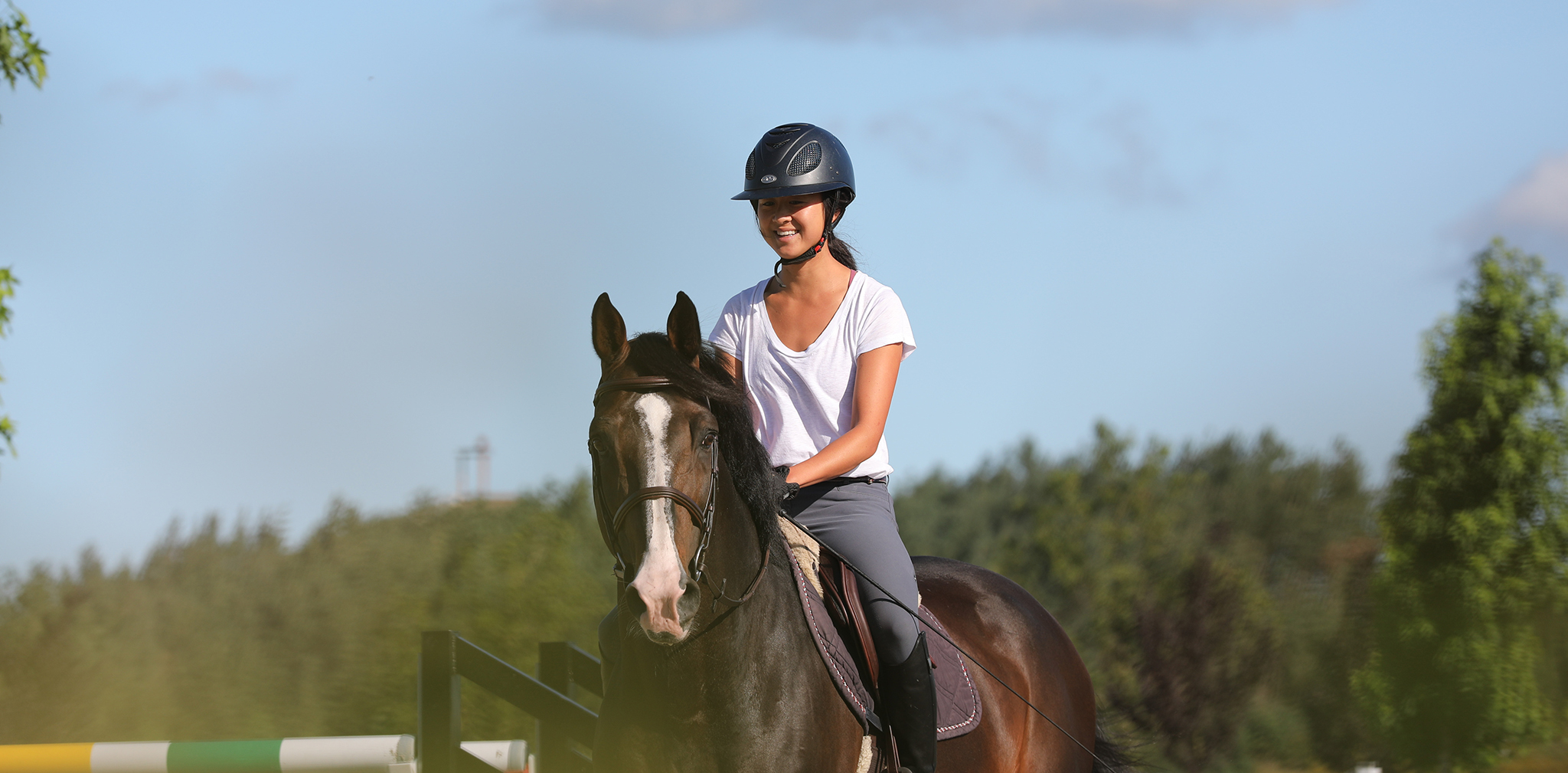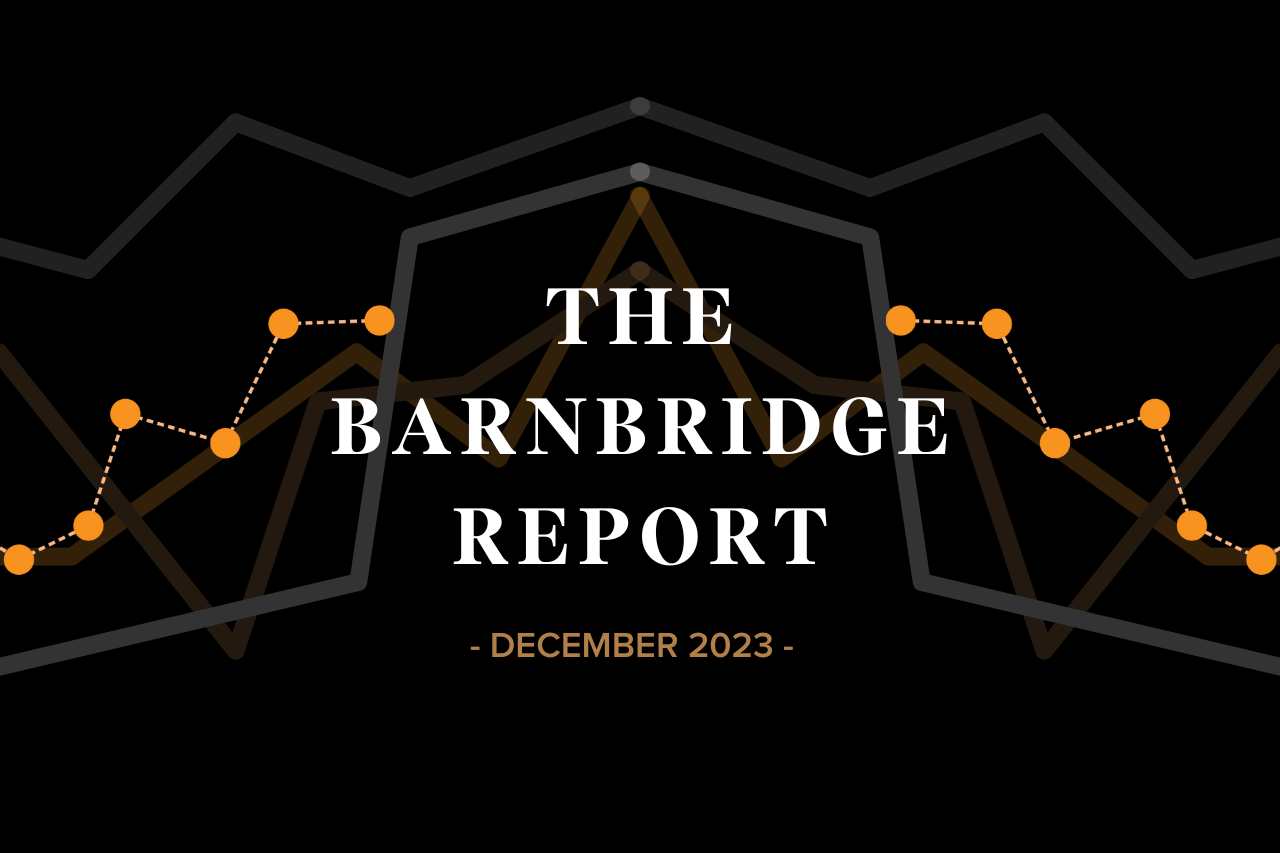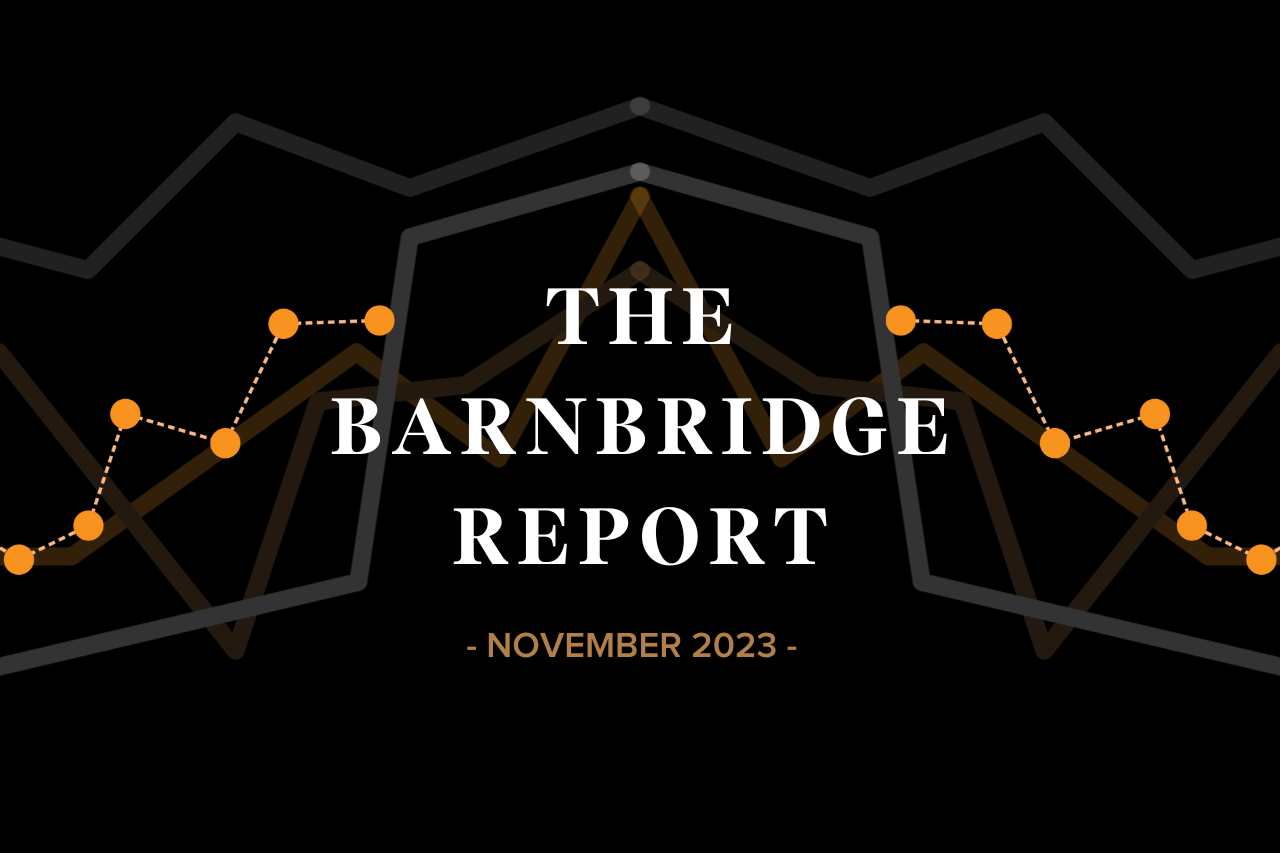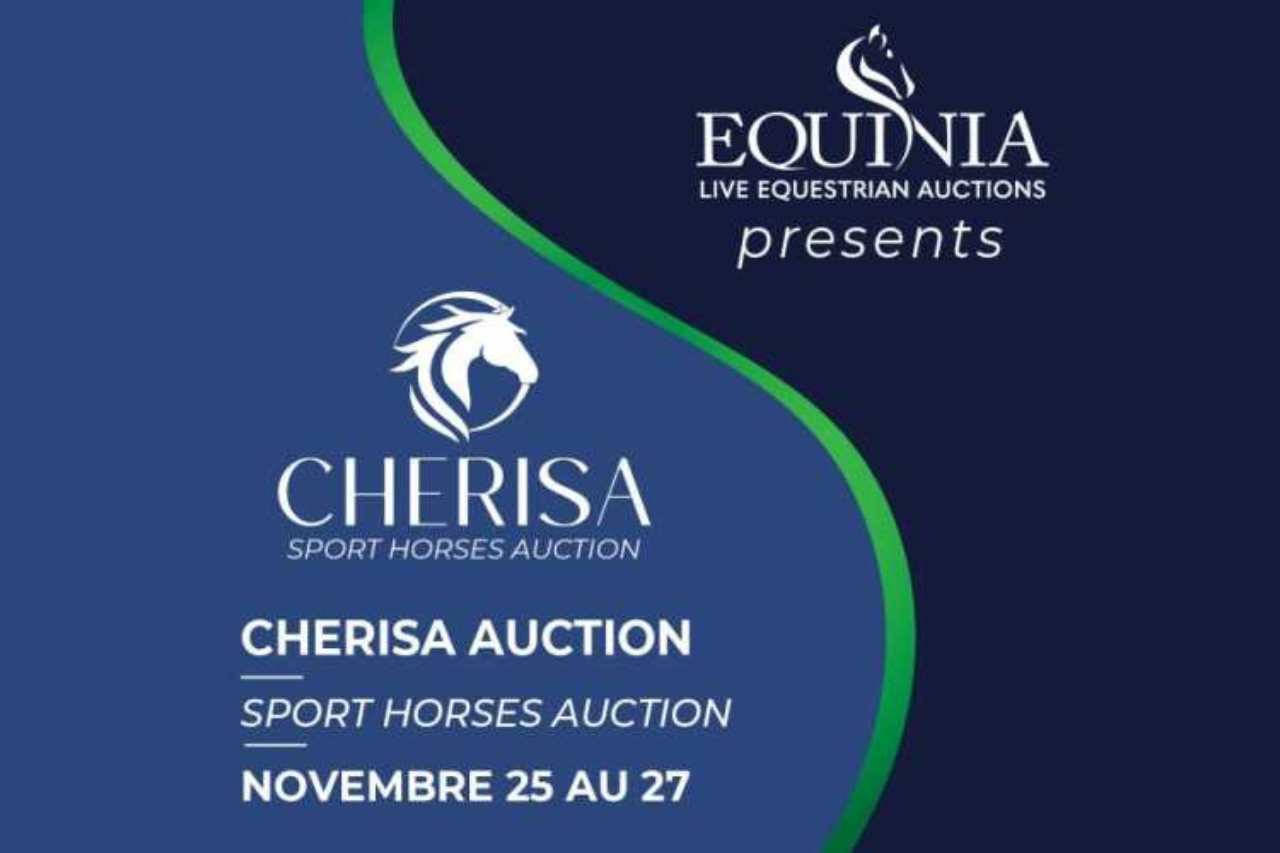If there is anyone who knows the tricks of the trade when it comes to auctions it is Jasmine Chen. The life of the Olympic rider and businesswoman is intrinsically linked to the world of art and horses. In both worlds auctions are playing an increasingly important role and the Taiwanese born professional has a clear grasp of how to navigate through them.
With her experience working at Sotheby’s auction house and in her family’s art business, she knows the risks and the thrills of buying at auction all too well. So, what is it that we can learn from Chen’s auction experiences and what should aspiring buyers look out for?
Combining horse sport with education and an art career
Jasmine Chen always knew she wanted to ride horses competitively but having a life and career outside of the horses was always the goal. “Until I was 17 years old all I wanted to do was ride horses, but my parents always insisted that showjumping should remain a hobby and that I continue my studies, finish university, and find a job (unrelated to horses). Looking back now I am glad that I pursued both a life in the saddle and away from it,” Chen, who ended up studying Art History at the University of Pennsylvania, begins to tell. “Today my life is split between showjumping and working in the art world. Horses will always be my passion but I’ve also come a long way in the art industry.”
In 2013 after graduating from the University of Pennsylvania in the United States, Chen began working for Sotheby’s in New York and Hong Kong, specializing in modern and contemporary paintings. To kick off her art career, Chen stopped riding for 4 years in order to immerse herself in the art world. Eventually Chen was able to build her career both as an art professional and a showjumper, simultaneously climbing the ranks in the world of the art market and the world of showjumping. Chen has successfully represented Taiwan at two World Equestrian Games, in Kentucky in 2010 and Tryon in 2018, and last year competed as an individual rider at the 2021 Olympic Games in Tokyo. After having reached the “holy grail” of all athletes and also finally achieving her childhood dream at the age of 33, Chen has now shifted her focus back to the art world.
Best of both worlds
“The past three years my focus was very much on the sport and training for the Olympics. Now I divide my time between working for my family’s business which is based in Taiwan and running my horse business, Kemperten Sporthorses, in the Netherlands.” Chen, who is combining the best of both worlds, explains. “Both art and horses are my passion, a way of life. That is why, especially since the Covid-19 pandemic, it has been interesting to see the growth of horse auctions in numbers and also from mostly live to predominantly online or hybrid.” When she was 15, Chen remembers being at her first equestrian auction in Germany, organized by Paul Schockemöhle. “In the showjumping world Paul was one of the first people to organize these fancy auctions where people from all over the world would attend, have a glamorous dinner party, then buy horses. The scene has changed quite a bit since then, a lot more competitors have popped up, but the formula and the mechanics behind auctions remain the same.”
All about trust and relationships
“There are many parallels between art auctions and horse auctions. As a buyer, you want to buy from the platform that sources the best material, whether it is art or horses. As a seller, you want to sell through the platform that attracts the most amount of clients and who has a reliable track record. Therefore, it is the job of the auctioneer to develop their relationship with their clients in the best possible way so that when they are sourcing for their auction their clients will have enough trust and confidence to consign their paintings or horses to the auction. In today’s crowded marketplace it is more important than ever that people establish trusting and long-lasting relationships with their clients if they want to thrive in the business in the long term. In fact, you will start seeing that the buyers and sellers of these auctions are going to be the same clients.”
Homework
“As a frequent auction participant (I love buying from auctions..), the best advice I can give is to do your homework beforehand: look into the history of the lot, know where it’s coming from, and find out as much as you can so you can better assess what it is worth in the marketplace and what it is worth to you. It is easy to get swept away by the thrill of the moment during an auction so it’s always advisable to know the value and set your maximum bidding price before the auction starts. Yes, there is always a risk when you buy at an auction, but in this day and age if you want to buy high-quality you will have to pay a premium anyway, whether it is at auction or private sale. Whether you acquire a work of art by Picasso or a talented sport horse, most people are buying with the aim of investment, hoping that the object or animal will increase in value.”
No investment is bulletproof
“Once again there are many similarities to be drawn here. Despite front-page news about art selling for ten- or hundred- times the purchase price, the reality of the art market is much more volatile than what the media lets on. In recent years there is a lot of speculation going on in the contemporary art market, where a young artist’s work would go from $20k to over $1m in the span of a year only to go back down to $60k the following year. This cycle of “pump and dump” have sadly become a norm in the art market, where buyers chase the same artists’ works at the same time and once the prices skyrocket everyone tries to sell at the same time which essentially kills the market for the specific artist. For horses, it is less volatile but much more unpredictable. When buying foals and young horses especially, the only metrics to assess the animal is the breeding and the physical appearance. Things like scope and mentality are often undiscernible until the horse is older and jumping at least 135cm. At that point you know if you have a superstar or just a normal horse. There is also added risk because horses have an expiration date, the golden years of 6 to 9 years of age are short and the horse can get injured at any moment in their career.”
Heat of the moment
“There is a lot happening at each auction. The setting, the atmosphere, the socializing, the audience, the auctioneer, the music, the fanfare.. These events are often made to be glamorous and theatrical to maximize excitement and emotions which increase bidding activity, and you see it more and more often with equestrian auctions (and often times charity art auctions). Participating in these live auctions, which come with dinner and drinks, can often be distracting so it is really important to keep the emotions at bay when you are bidding. I’ve seen too many cases of buyer’s remorse where people bid over their initial set price and pay a price far above the fair market value of a horse or work of art all because they got lost in the heat of the moment (or because they got too drunk). On the other hand, I’ve also seen people who are too rational and stick to their initial maximum price only to look back later and regret not having bid higher. I think it’s about finding the balance between being aggressive with your valuation and assessment of the lot pre-auction but not being overly emotional when the time comes to bid.”
Knowledge is power
“Before participating in auctions, the valuation of the lot is the most important part. In order to play this game for the long run, it is essential that the participant has the ability to appraise the object. While this is easily done by seasoned professionals, there are more and more amateurs bidding at auction these days, and given the fact that these products, whether it is art or horses, are all unique goods with no set market price (each object is worth as much as what the next person wants to pay for it), how does one figure out the value of the lot they want to bid on?”
Growing database
The creation of Barnbridge was partly inspired by information available in the art world about upcoming and sold lots. “In the art world, professionals use various sources, one of which is a website called Artnet for example. Essentially this is an online database that shows you the results of all public art auctions that took place in the world in the past 30 years. This database, plus personal experience, are the most important tools that art professionals use to determine the value of a work of art. Therefor I think Barnbridge is very interesting, because the platform has started compiling auction results and data so members can find out past, and recent prices achieved for certain horses.
For example, if you want to bid on a foal by Diamant de Semilly, through Barnbridge you can now find out all the prices achieved recently for this particular breeding. It is interesting for both auction participants and also breeders. What used to be market-insider information is now accessible by anyone. Barnbridge has a lot of potential to grow and become an essential tool in the horse business for both professional and amateur buyers, and for both auctions and private sales.”
In collaboration with Jasmine we are offering our readers the chance to do their homework on Barnbridge with a 50% discount on a membership. Enter jasmine50 at the sign-up process to claim your offer. Click to become a Barnbridge member.
*The promo-code is only valid for two weeks after the publication of this article.



